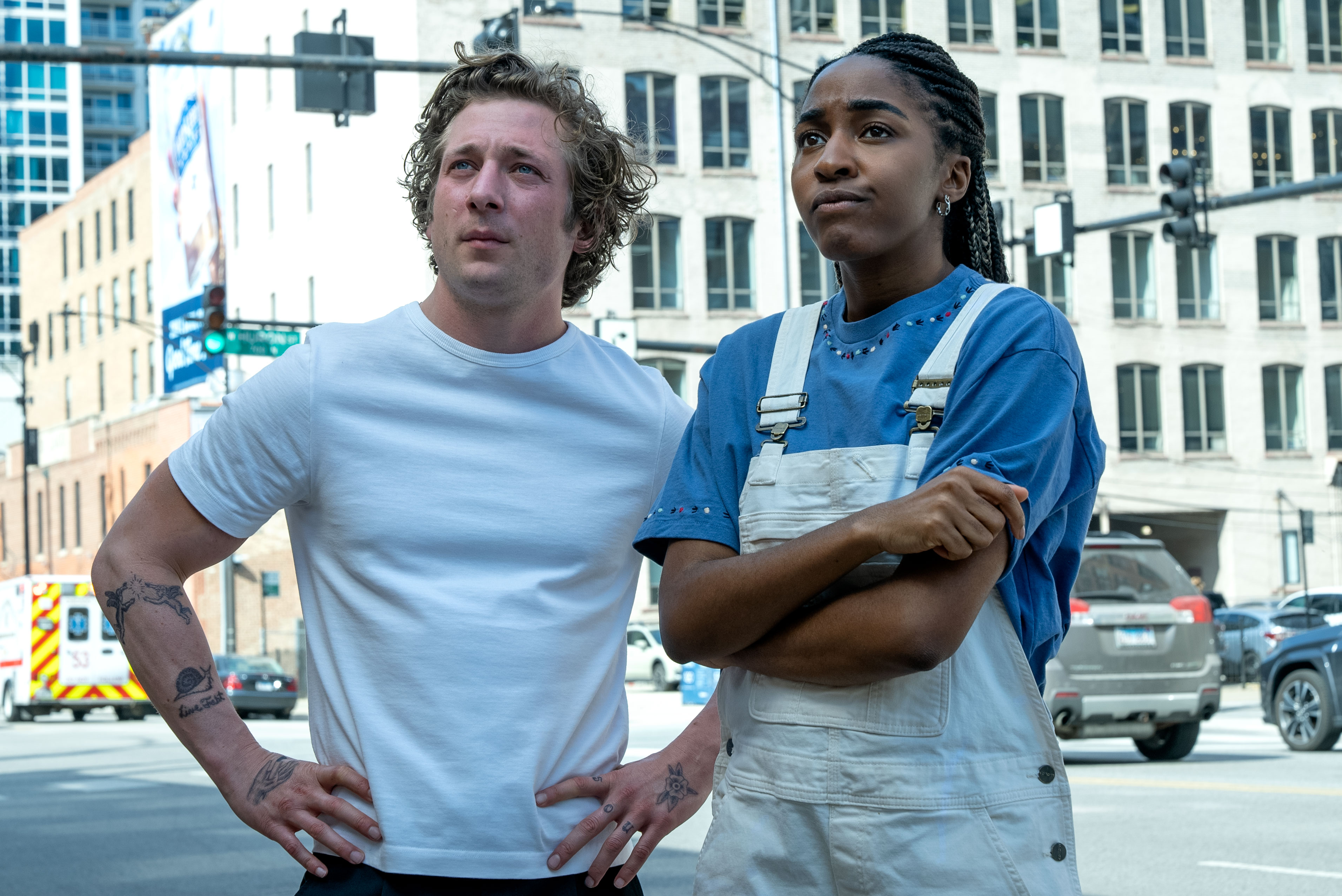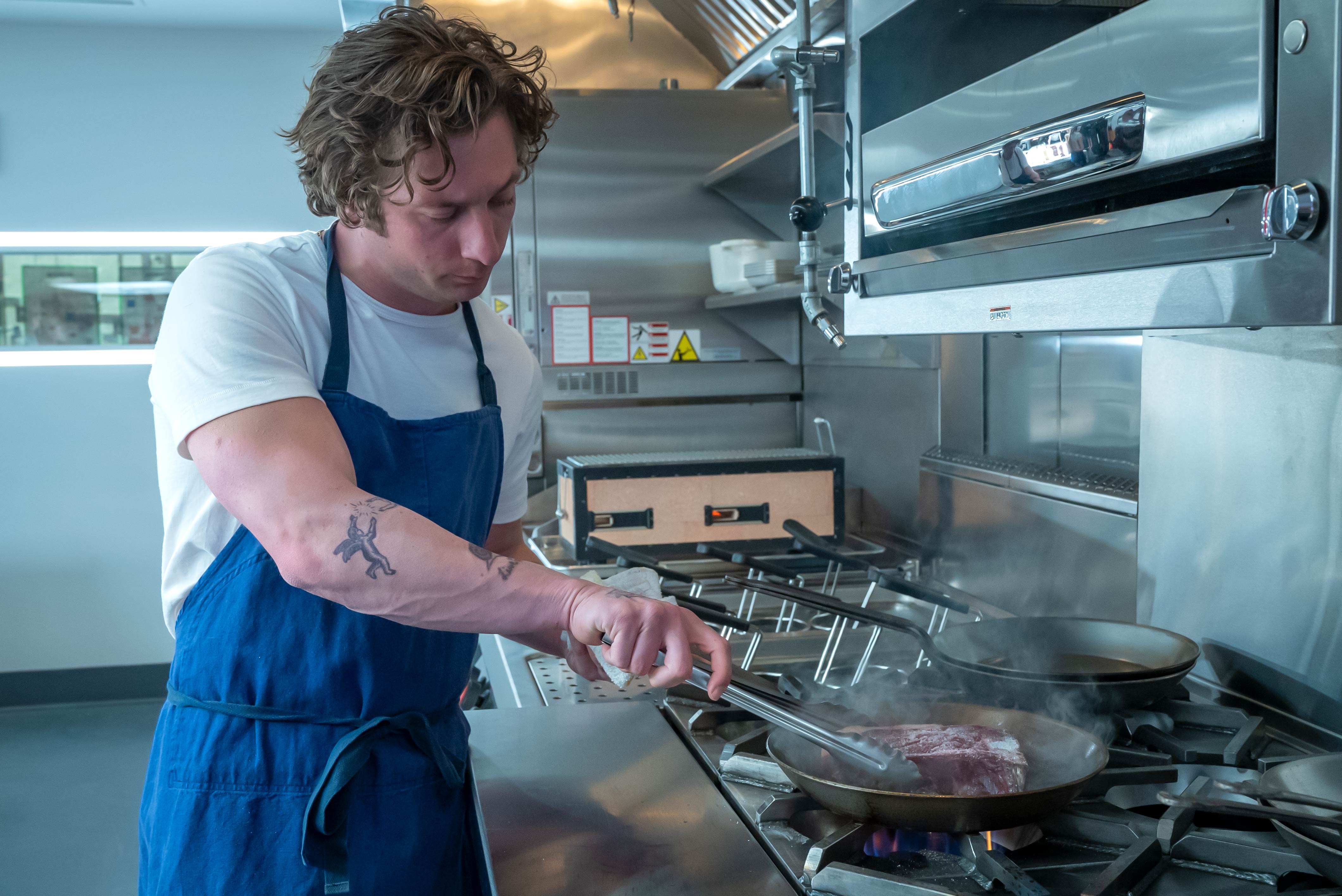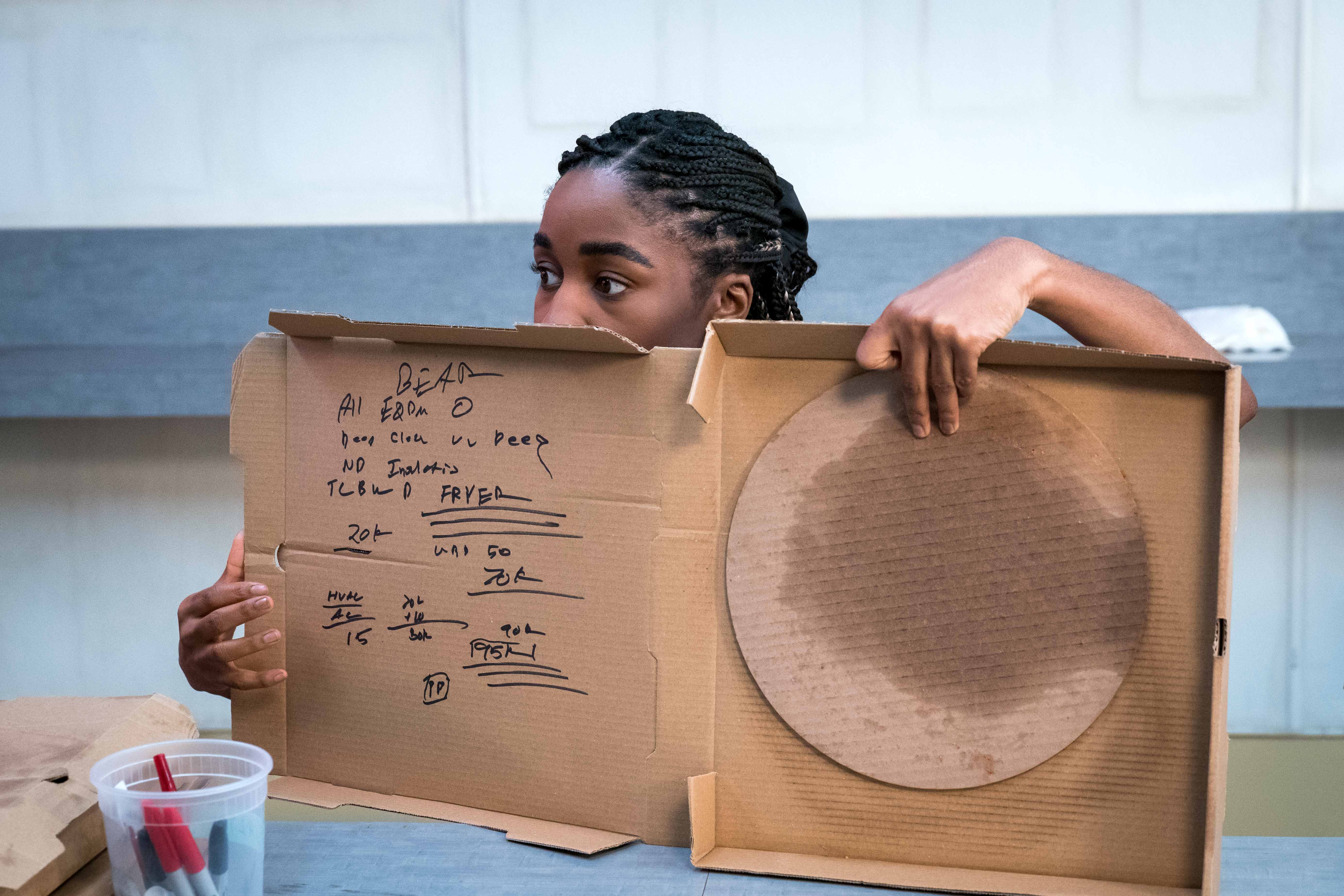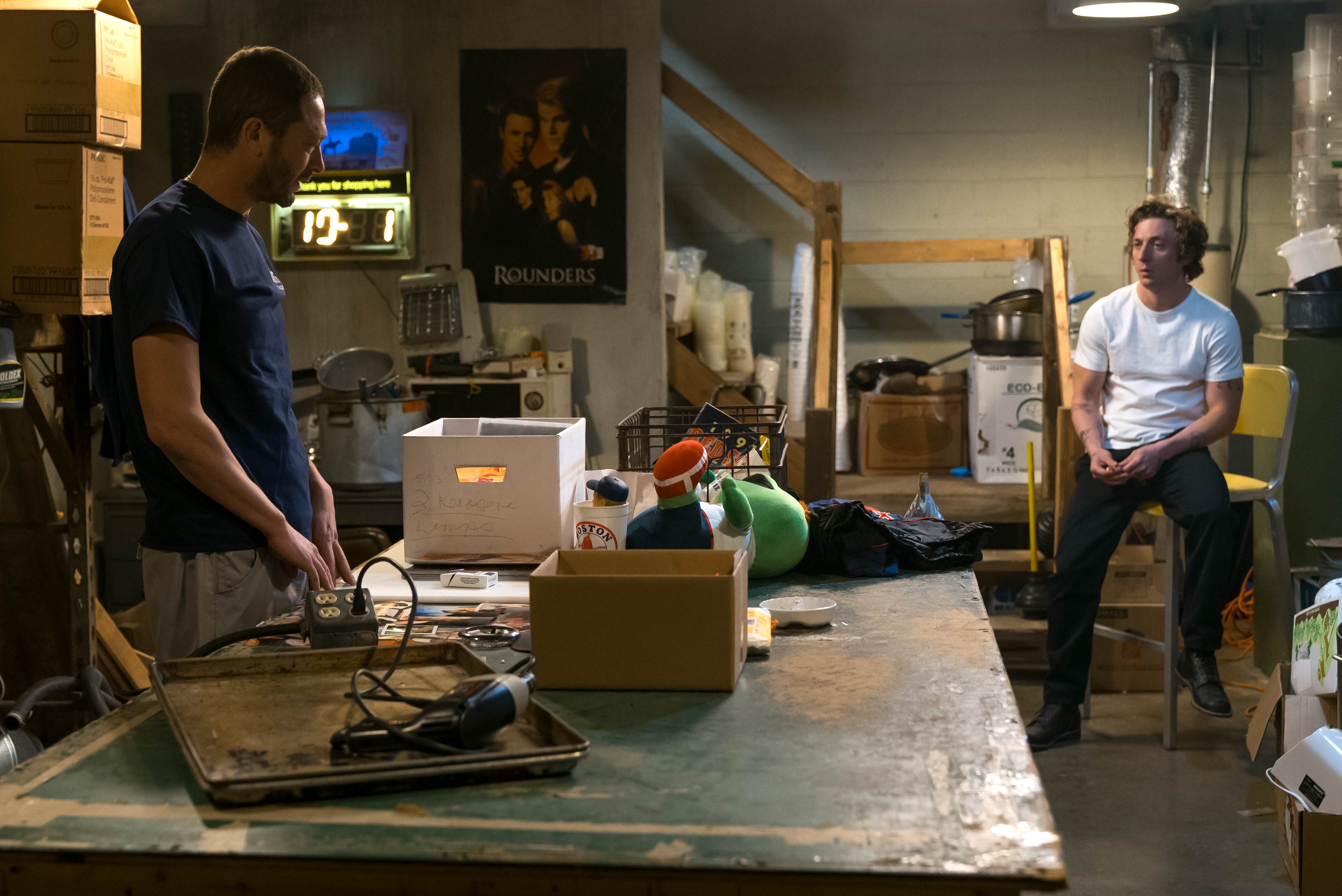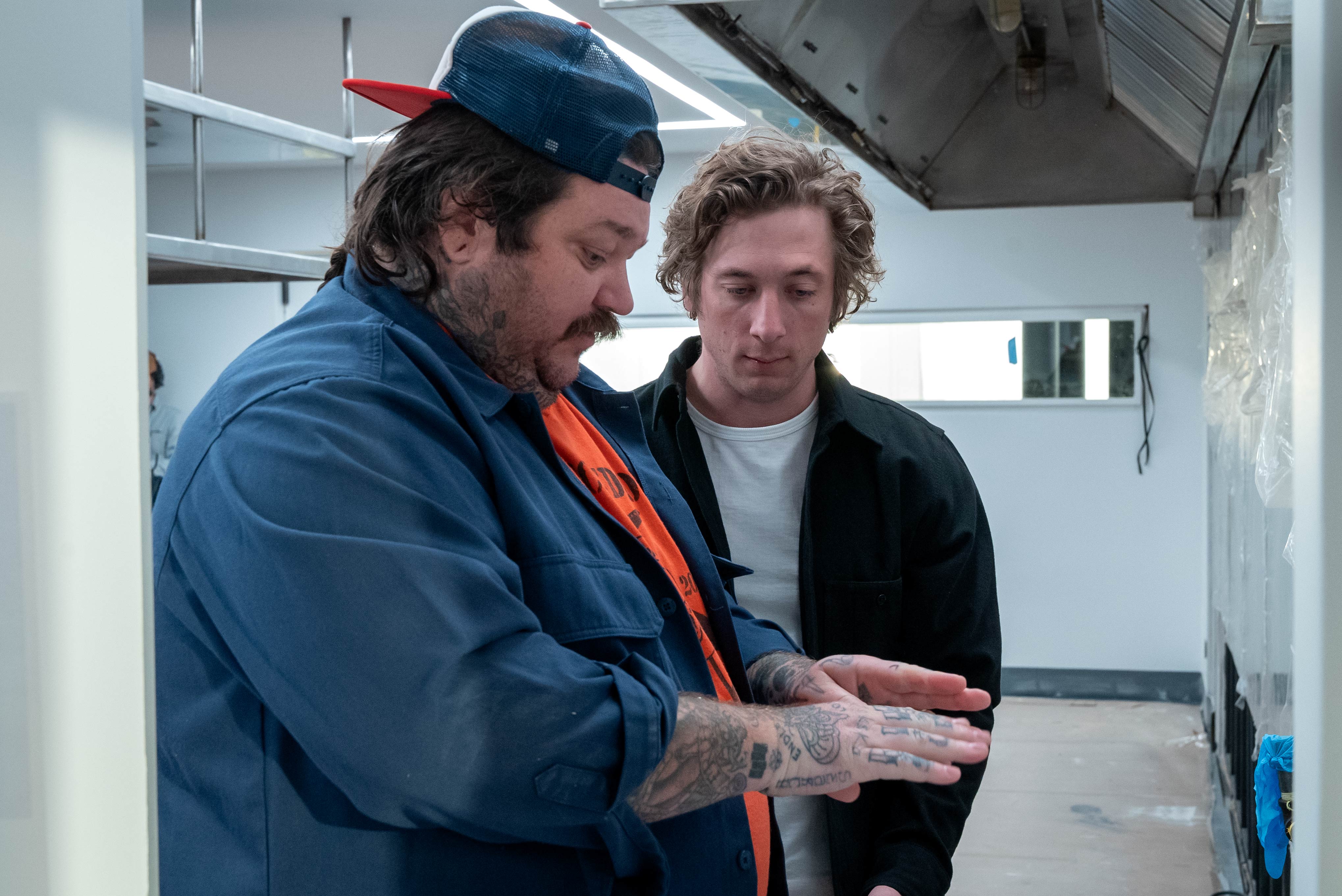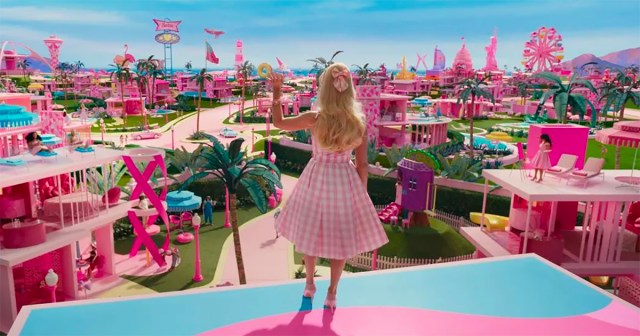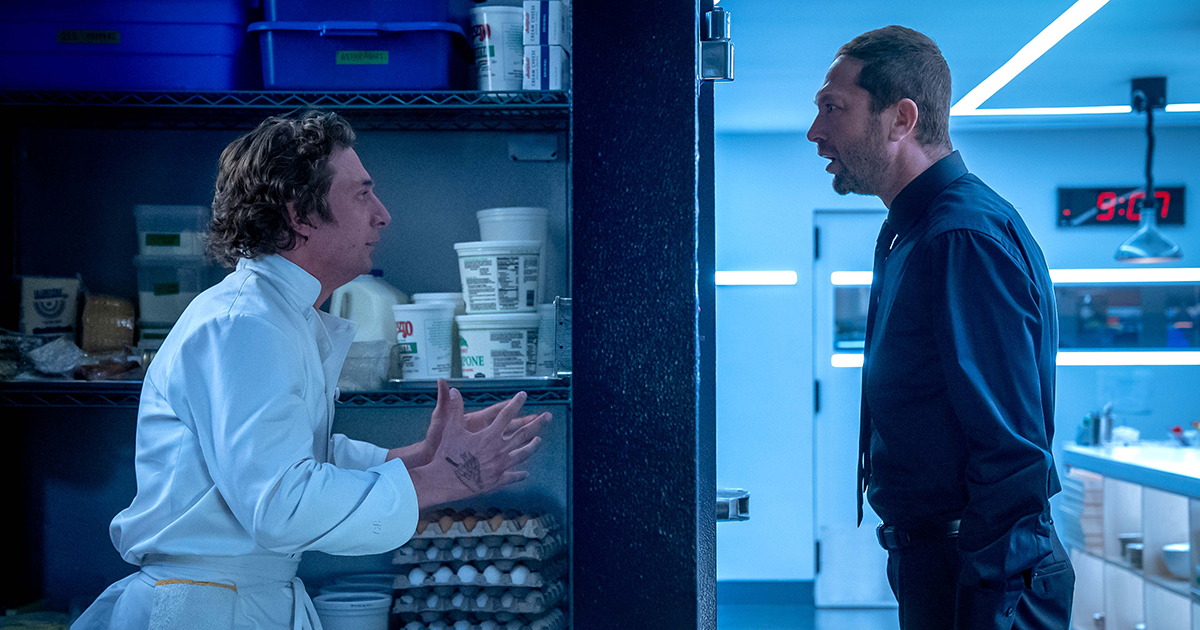
Jeremy Allen White as Carmen “Carmy” Berzatto, Ebon Moss-Bachrach as Richard “Richie” Jerimovich. CR: Chuck Hodes/FX.
TL;DR
- Joanna Naugle has edited 12 of the 18 episodes of The Bear‘s two seasons. She shares her experience working on the project with creator Chris Storer, who she calls post-production house Senior Post’s favorite collaborator.
- Naugle used pacing and sound design to help differentiate the mood at The Beef from other restaurants where Carmy (and sous chef Sydney) had worked in the past. Pacing and sound design play a key role in setting the scene.
- Naugle also discusses the importance of collaboration, the benefits of cutting while production is ongoing, and talks workflows in the age of LucidLink.
If The Bear reminds you of a classic, gritty Martin Scorsese film, you won’t be surprised that editor Joanna Naugle is a devotee and used multiple films as a reference for the project.
Naugle told No Film School, she is one of those who “worship at the temple of Schoonmaker” Scorsese’s longtime editor, Thelma. Showrunner Chris Storer wanted to emulate the vibe and pace of those films. Naugle was in, calling it “an honor” to try to imitate Schoonmaker’s style.
(She also cites Roderick Jaynes, the Coen brothers’ fictional editor alter ego, as another film role model.)
Naugle edited five episodes in the first season, and she is credited on seven episodes of The Bear’s sophomore season, so it’s no wonder her fingerprints and Schoonmaker’s influence are all over The Bear. (For context, SNL’s Adam Epstein cut seven of the total 18 episodes).
Storer (who Naugle describes as her favorite collaborator) runs a very interactive production, so she and the other editors got to see dailies very early in the process. Although they worked remotely for the majority of the shoot, Naugle says their process enabled them to catch opportunities for which they’d want different footage — and do so at a point when it was still workable.
“I always try to [be] a day behind the daily,” Naugle said to No Film School’s Gigi Hawkins. That means she’s able to tell Storer and executive producer Josh Senior, “If we just had this one shot, like, this would really make the scene or, like, we’re missing like a little bit of transitional material there.”
Naugle’s prime example of this benefit shines in season one, episode two:
Head chef Carmy Berzatto is working ungodly, lonely hours, scrubbing every inch of the kitchen with a toothbrush. The scene is set by watching all the employees clock out in rapid succession. But that punching out montage wasn’t in the original script. When Storer, Senior, and Naugle discussed the need to show how alone Carmy felt in the normally frenetic restaurant, Storer suggested the punch cards. And Naugle knew, “This is such a succinct, easy way of just saying, like, ‘Oh, everyone [else] is home,’” as she told Hawkins.
Because they were still on set, it was easy for the crew to shoot the necessary footage.
“The scene is just so much stronger for it,” Naugle says. “So that’s definitely a pro to having your editor working while you’re also shooting, and they can be reviewing what’s there or not.”
SETTING THE PACE
Much of The Bear is compressed and distilled like a fancy compote.
The infamous three-minute montage that begins the pilot? Naugle explains it started out as 10 minutes of scripted scenes, but when Storer first reviewed it, he said something to the effect of “‘This is great. Like it’s [a] 10 minute intro. Can we make it three minutes?’ And I was, like, ‘That’s an interesting and intense note. Let’s try it,’” as she recounted to Ray Richmond of Gold Derby.
What resulted was indeed intense and a bit, intentionally, off-putting. “We basically threw everything in there, all at once, to kind of just, like, establish ‘This is our show. You’re in or you’re out. It’s gonna be crazy.’”
And based on buzz (and the fact that it was greenlit for a second season), many of us decided to stick with Carmy and the crew of The Original Beef.
“Each new cut brings you further into the stressful kitchen at The Beef, or into Carmy’s frazzled mind. It‘s the kind of editing you notice, but only because it’s so successful at drawing you further in,” Katey Rich writes in her summary of the Little Gold Men episode featuring Naugle.
Those of us who continued watching through episode two were rewarded with a glimpse into Carmy’s training. This scene, featuring Carmy working in New York under Joel McHale’s unnamed head chef, is another masterclass in demonstrating how editing can drive a story.
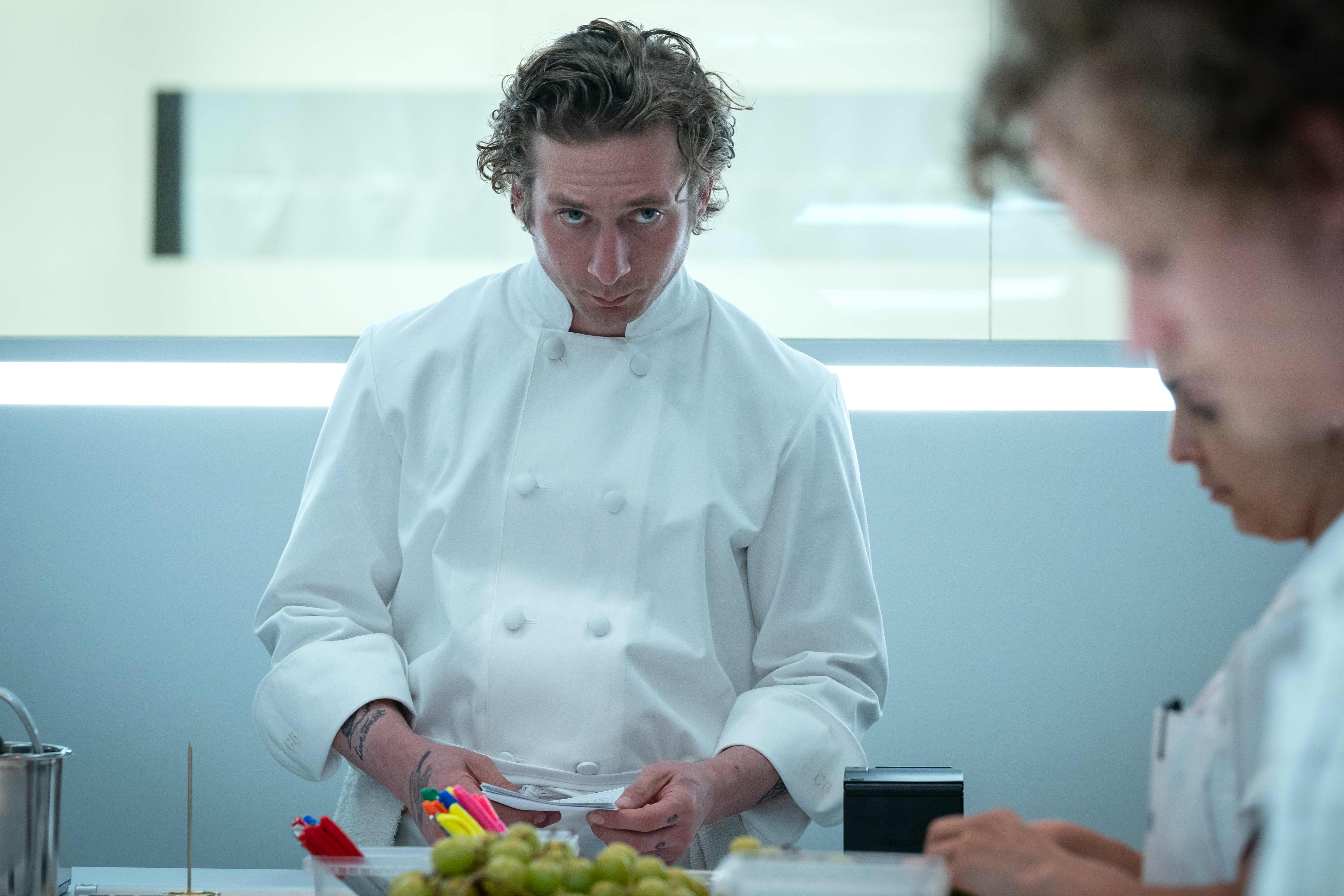
CR: Chuck Hodes/FX.
They differentiated the restaurants, not in pacing, but in other subtle, significant ways to demonstrate that the NYC restaurant is like “a symphony and everybody is doing exactly what they need to.”
The scene in the New York restaurant exuded a seamless, smooth-like-butter quality. Naugle told Filmmaker U’s Gordon Burkell: “I basically added a couple of like digital zooms to a lot of those close ups to just make it feel like every shot was moving from left to right, left to right. And just adding that little bit of movement just made them all feel a lot more connected. And then when we got back to The Beef, a lot of the close ups are just like static, and they feel, like, disconnected. And they’re dirty, obviously.” Through some light touches in Premiere, they “were able to make everything feel a little bit more fluid and like it was one shot, even though there were a lot of cuts within it.”
While the New York kitchen might seen more functional than The Beef, the score makes it clear that the atmosphere is one where creativity is stifled and terror is just below the surface.
Also, Naugle turned to sound design, electing to make NYC much quieter than The Beef. The background music is dissonant and disquieting, in contrast to the practiced movements of the staff.
Whereas, back in Chicagoland, not only do Carmy and Richie duke it out in a shouting match, the score features two different songs competing, each one representing a different actor, with the volume increasing when they are speaking, to mimic “two people trying to like turn the radio dial to their station,” Naugle told Burkell.
Another scene from The Bear with a very distinct tone and pacing comes in episode four of season two, when (spoiler alert) Marcus travels to Copenhagen to train at Noma (a soon-to-be-dated reference).
“We really wanted to feel a departure from the pace that we’d set, you know,” she told Hawkins. “We linger a lot more in that episode. There’s a lot more quiet. There’s a lot more like silence. And that really was intentional to try to make it feel like, ‘OK, we’re leaving Chicago. We’re leaving this world. Marcus is having his own experience.’”
She notes this echoes the season one montage when Marcus meticulously crafts and decorates the donuts. Slow, colorful, almost meditative.
CREATING IN A COLLABORATIVE ENVIRONMENT
In the era of “prestige television,” it’s not uncommon for creatives to refer to episodes as 30-minute films. “I think Chris always wanted it to feel like it was a film in bite-sized segments or less, because they put so much time and energy and attention into all the little details,” Naugle told Hawkins.
And she is no different. Naugle’s regular involvement on The Bear meant she had “to think about it within the context of the whole season. So you’re editing a bunch of short films back-to-back that, hopefully, become an anthology,” she said.
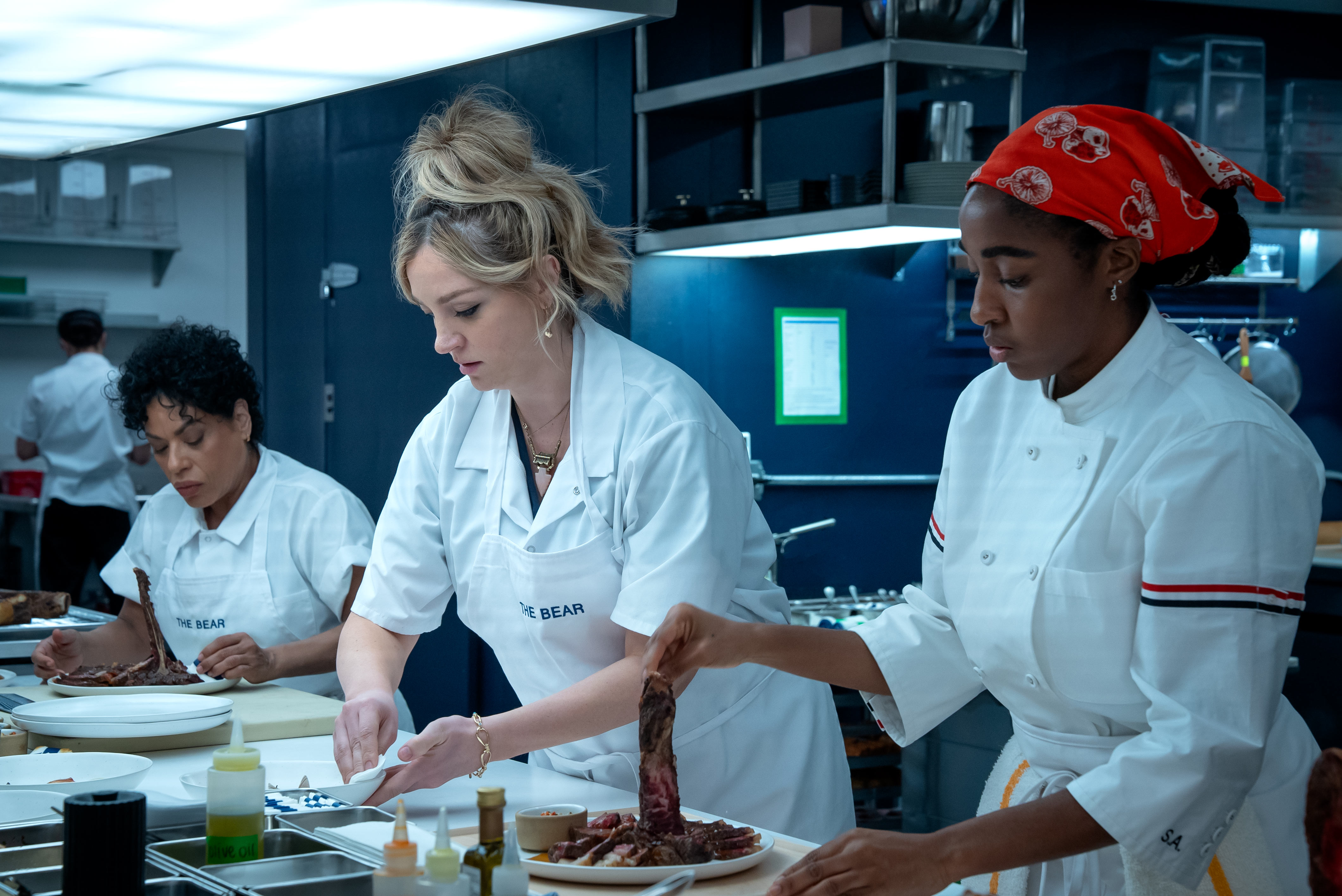
Another benefit of TV work, Naugle says, is the collaborative environment. Naugle enjoys “being able to just like, pass the baton back and forth and say, ‘OK, I got my first two episodes, now, I can’t wait to see what Adam [Epstein] did.’ And then I get to, you know, feel creatively inspired all over again.”
And that inspiration (and those breaks) are crucial for The Bear. After all, Naugle told Filmmaker U, “The pace is so crazy. And there’s flashbacks and montages, and makes you want to, you know, scream sometimes because it’s so intense. But that’s really, really fun.”
In practical terms, these hand-offs are facilitated by an all-Premiere workflow and LucidLink.
‟We use Adobe products, which has worked super well because we have all the shared media on LucidLink and then are able to see who’s in which project,” Naugle said.
Naugle appreciates the flexibility of modern ways of working, but notes that there are times when an email or even a Zoom conversation just won’t cut it for collaboration, as far as she’s concerned. Being physically together she says is “so important, especially, I find, for that last push.”
‟I think it’s our job as editors to help directors and writers — in a very supportive way — step away from what was intended on the page. They always say that the movie is shot three times, or
written three times; the original version, when you shoot it, and then what comes through in the edit,” Naugle told We Got This Covered’s Scott Campbell. ‟So I always try to be the first most unbiased audience to the footage.”
She takes that responsibility seriously. “[O]nce you’re in the edit room, it’s just like, ‘OK, what’s working, what’s coming through, let’s lean into the strengths and not be afraid to discard the things that didn’t totally work.’ And I think it takes a really creative and trusting collaborator to do that,” Naugle said.
You can check out more of Naugle’s work in the indie film Molli and Max in the Future (which debuted this spring at SXSW) or review episodes of Ramy, Two Dope Queens, Some Good News, and other movies and shows edited by Senior Post.


